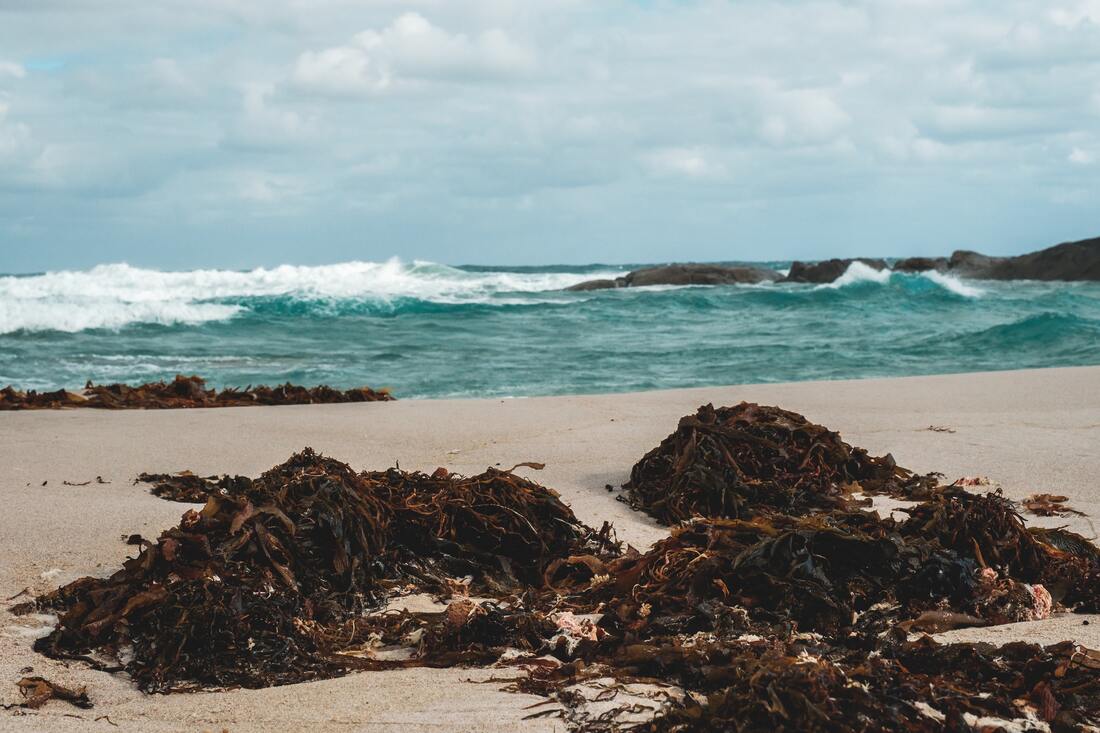|
Never do I cease to be amazed at the variety and detail of God's creation. Recently, my curiosity about seaweed was peaked when I saw piles of it on the South Florida beaches. Seaweed is made up of thousands of macroscopic, multi-cellular marine algae. It comes in colors of red, green, gold, and brown and is found in a multitude of shapes and sizes. Each specie has a specific purpose in the oceans of the world. However, when their environment is adjusted, they may damage the life around it. Such is the case for a type of seaweed called sargassum, a free-floating brown seaweed. Since 2011 this specie has inundated the Caribbean and Florida coastlines in such a mass that it has a negative effect on the coastal environments. In large quantities, this particular seaweed strips oxygen from the water and kills fish and seagrasses that offer habitat for many species. It also smothers shallow coral reefs and reduces the amount of sunlight that shines on the plants that need it.
You may ask what causes this phenomenon. Scientists have discovered three likely causes: (1) Saharan dust clouds that land on the surface of the water whose content is rich in iron, nitrogen, and phosphorus encourage large bloom and subsequent growth in the algae. (2) Warming temperatures also create an environment for growth. (3) Rising nitrogen levels caused by the human footprint is a growth enhancer. Scientists have discovered that large amounts of fertilizer flows from the Amazon River and then to the oceans. Stephen P. Leatherman of Florida International University discovered this problem area and one along the Mississippi River that dumps into the Gulf of Mexico. At the present time, there seems to be no good way to dispose of the great volumes of seaweed being deposited on the shore lines. Some of it can be plowed under the sand to help stabilize the beaches. In Ft. Lauderdale it is collected, washed to remove the salt, and converted into fertilizer or mulch. When we look at other species of seaweed we should keep in mind that it is beneficial as habitats for fish and other marine life. In some countries, seaweed is used for food and even produced on farms. In addition, it can be used in the production of medicines, fertilizers, cosmetics and paint. Many varieties, especially kelp, have life-giving qualities in that they absorb carbon dioxide and release oxygen. I know that God created every creature and its habitat with a plan and a purpose. All creation is to work together for the good of humankind and for the glory of the Lord. We see, however, that humans have not done a good job of caring for creation. Psalm 24:1-2 says, "The earth is the Lord's and all of its fullness, the world and those who dwell therein. For He has founded it upon the seas and established it upon the waters." (NKJV) Seaweed is meant to be a blessing to the creatures who live in and around it. It stands as an example of a small part of creation that can have a major impact in the world for good or evil. We too can impact the world around us for good or evil. Let us be declarers of truth and agree with the Psalmist when he says, "Let heaven and earth praise Him, the seas and all that move in them." (Psalm 69:34) |
Joan E. MathiasCategories
All
Archives
July 2024
|

 RSS Feed
RSS Feed